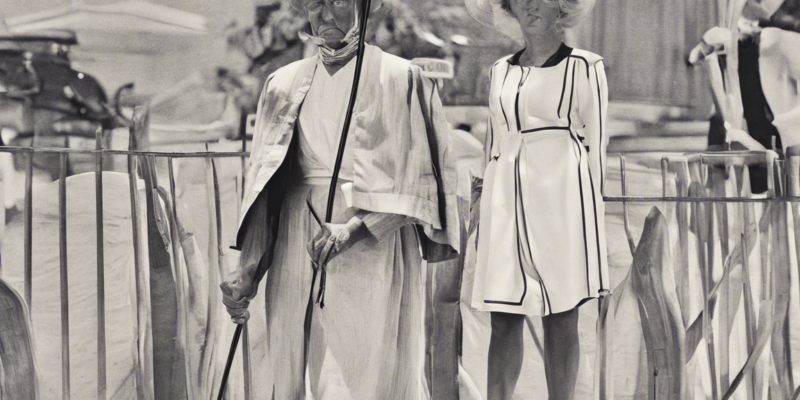The fashion industry has long been associated with glamour, prestige, and trend-setting style. However, behind the glitz and glamour lies a dark truth – the environmental impact of the industry. Fast fashion has dominated the market for decades, leading to massive amounts of waste, pollution, and exploitation of labor. In recent years, there has been a growing movement towards sustainable fashion, a concept that focuses on creating clothing in an environmentally and socially responsible manner. This shift towards sustainability has been driven by a rise in consumer awareness and demand for ethical and eco-friendly products. As a result, more and more fashion brands are now incorporating sustainable practices into their operations, from sourcing organic materials to utilizing upcycled fabrics and reducing carbon emissions in their production processes.
The Evolution of Sustainable Fashion
The roots of sustainable fashion can be traced back to the 1980s, when environmental and social issues started gaining more attention. However, it wasn’t until the 1990s and early 2000s that the concept began to gain momentum within the fashion industry. Key events such as the Rana Plaza tragedy in 2013, where a garment factory collapse in Bangladesh killed over 1,100 people, brought the inhumane working conditions in the industry to the forefront of public consciousness. This led to increased pressure on fashion brands to be more transparent and accountable for their supply chains.
Principles of Sustainable Fashion
Sustainable fashion is guided by several key principles that differentiate it from traditional fast fashion practices. These include:
1. Ethical Production
Sustainable fashion brands prioritize the well-being of their workers by ensuring fair wages, safe working conditions, and overall respect for human rights.
2. Environmental Stewardship
From using organic and natural materials to reducing waste and emissions, sustainable fashion aims to minimize its impact on the environment throughout the production and distribution process.
3. Circular Economy
Embracing the concept of a circular economy, sustainable fashion seeks to create clothing that can be reused, repaired, and recycled, thus reducing the amount of textile waste that ends up in landfills.
4. Transparency
Sustainable fashion brands are transparent about their sourcing and production processes, allowing consumers to make informed decisions about the products they buy.
The Benefits of Sustainable Fashion
The shift towards sustainable fashion offers a wide range of benefits, not just for the environment and society, but also for the fashion industry itself. Some of the key advantages include:
- Environmental Preservation: Sustainable fashion helps reduce water consumption, chemical pollution, and carbon emissions, leading to a healthier planet.
- Social Impact: By promoting fair labor practices and supporting local communities, sustainable fashion contributes to social justice and economic development.
- Innovation: Embracing sustainable practices encourages creativity and innovation in design and production processes, leading to unique and high-quality products.
- Consumer Demand: With an increasing number of consumers demanding ethical and eco-friendly products, brands that embrace sustainability are likely to attract a larger customer base and build brand loyalty.
- Regulatory Compliance: As governments around the world implement stricter regulations on environmental protection and labor rights, sustainable fashion brands are better positioned to meet these standards and avoid legal issues.
The Future of Sustainable Fashion
As the global movement towards sustainability continues to grow, the future of sustainable fashion looks promising. More fashion brands are adopting sustainable practices and incorporating them into their business models, signaling a shift towards a more responsible and conscious industry. With advancements in technology and growing consumer awareness, the possibilities for sustainable fashion are endless. From biodegradable textiles to zero-waste production methods, the potential for innovation and growth in this sector is vast. Ultimately, the rise of sustainable fashion represents a positive step towards creating a more ethical, eco-friendly, and inclusive industry that benefits both people and the planet.
Frequently Asked Questions (FAQs)
1. What is the difference between fast fashion and sustainable fashion?
Fast fashion refers to the rapid production of inexpensive, mass-market clothing that is often made with poor quality materials and labor practices. Sustainable fashion, on the other hand, focuses on creating clothing in an environmentally and socially responsible manner, using ethical production methods and eco-friendly materials.
2. How can I support sustainable fashion as a consumer?
You can support sustainable fashion by choosing to buy from brands that prioritize ethical and eco-friendly practices, shopping for second-hand clothing, and investing in high-quality, timeless pieces that will last longer.
3. Are sustainable fashion brands more expensive?
While sustainable fashion brands may have slightly higher price points compared to fast fashion retailers, it’s important to consider the long-term value and impact of investing in quality, sustainable clothing that lasts longer and has a lower environmental footprint.
4. What are some sustainable materials used in fashion?
Sustainable materials commonly used in fashion include organic cotton, hemp, bamboo, recycled polyester, Tencel (lyocell), and eco-friendly dyes derived from natural sources.
5. How can fashion brands become more sustainable?
Fashion brands can become more sustainable by sourcing materials responsibly, reducing waste in production processes, investing in renewable energy, promoting fair labor practices, and being transparent about their supply chain and operations.

